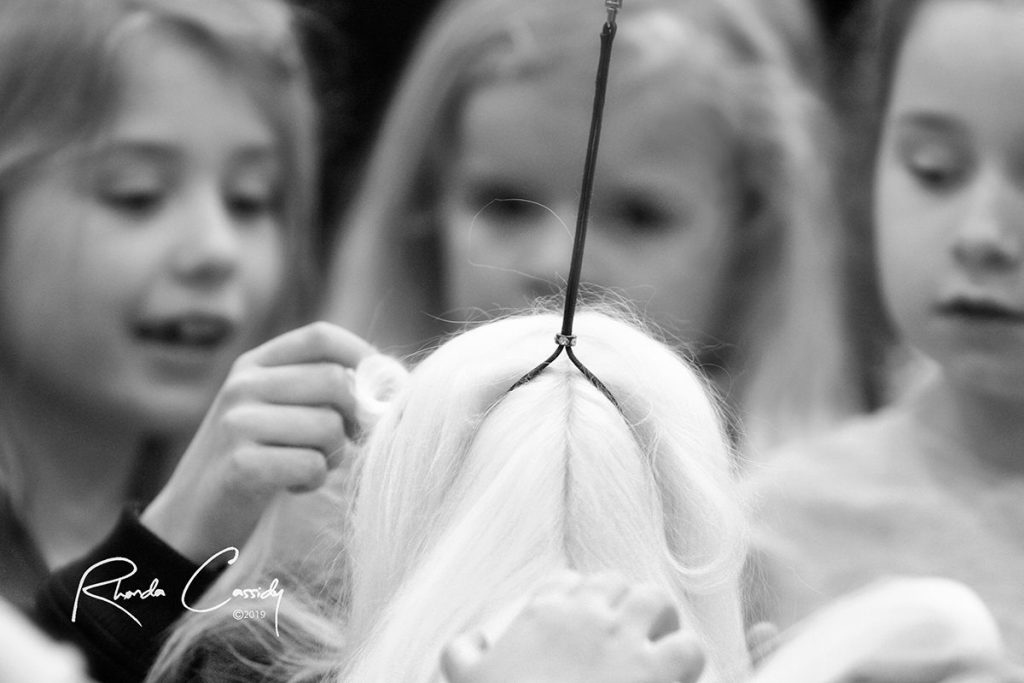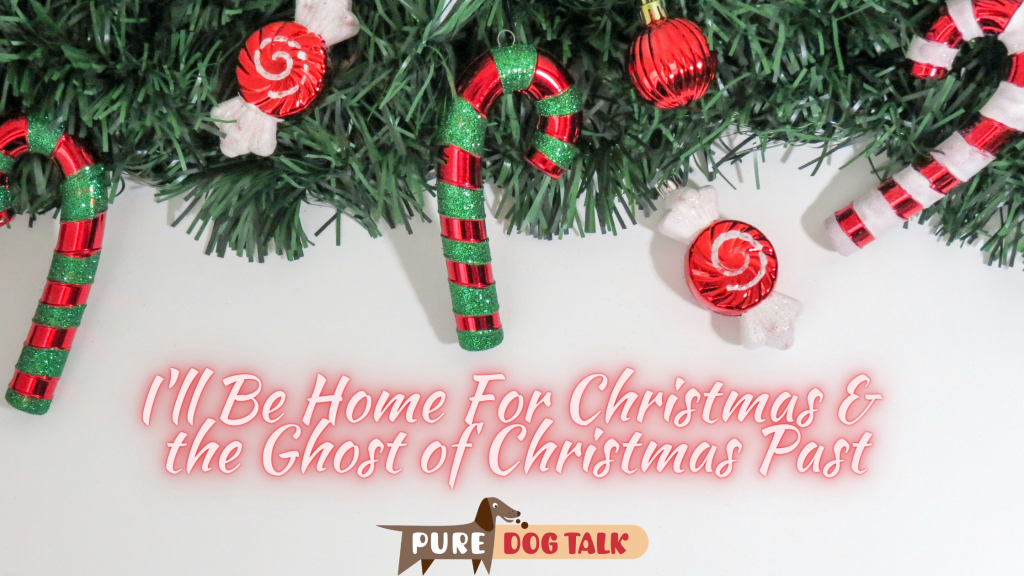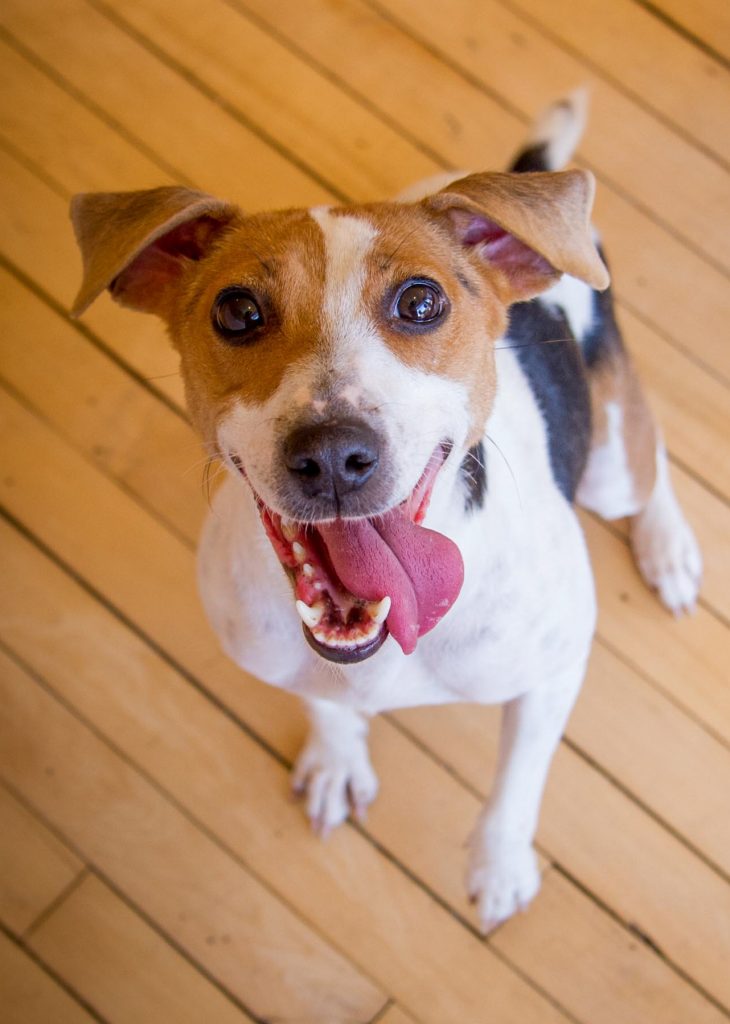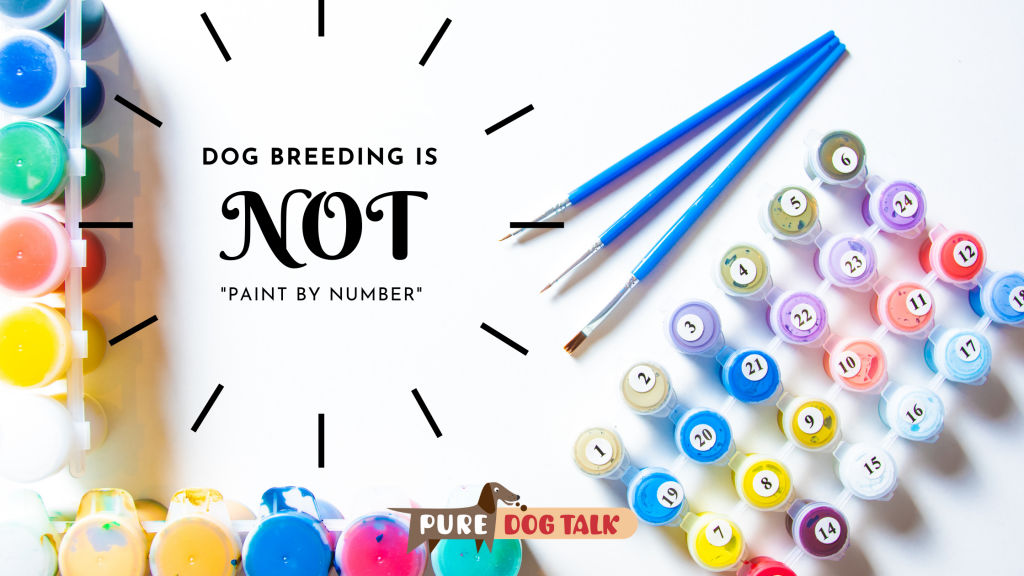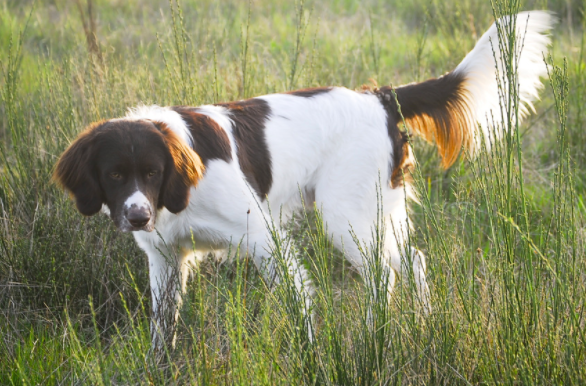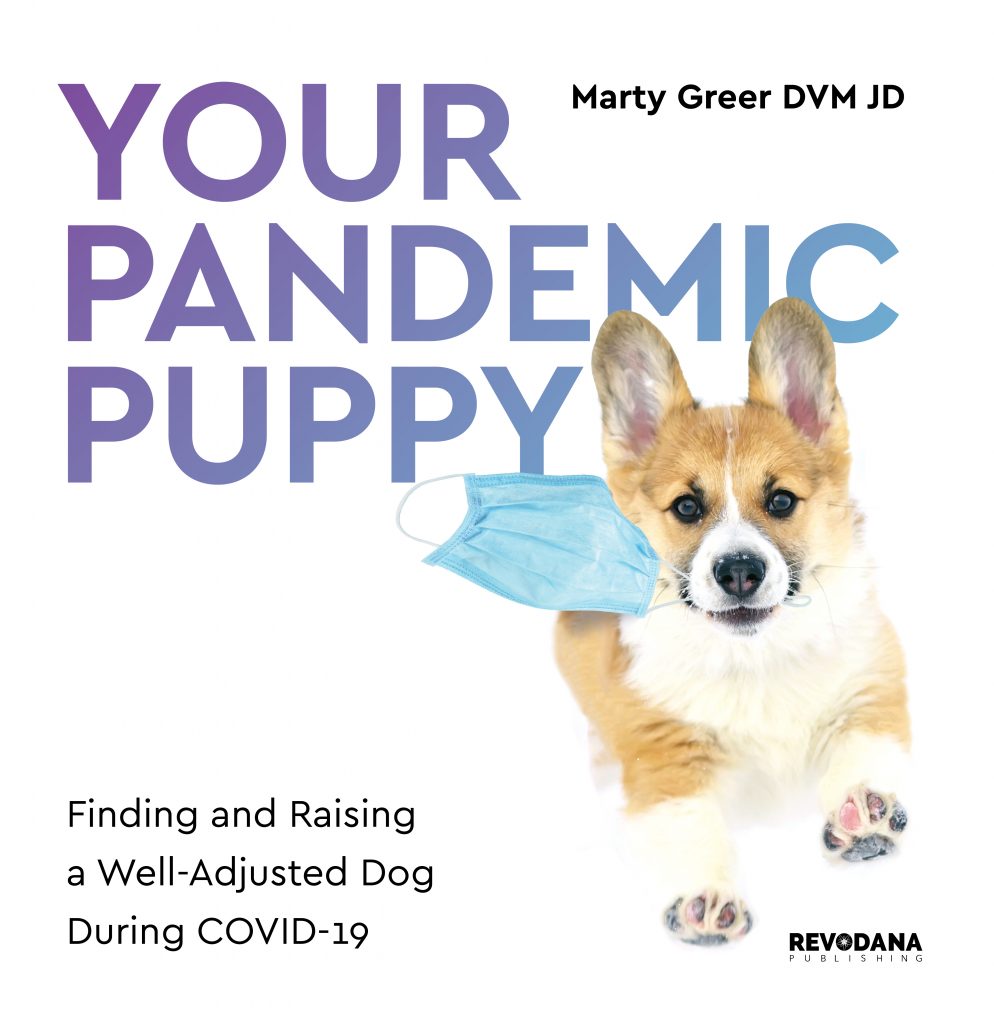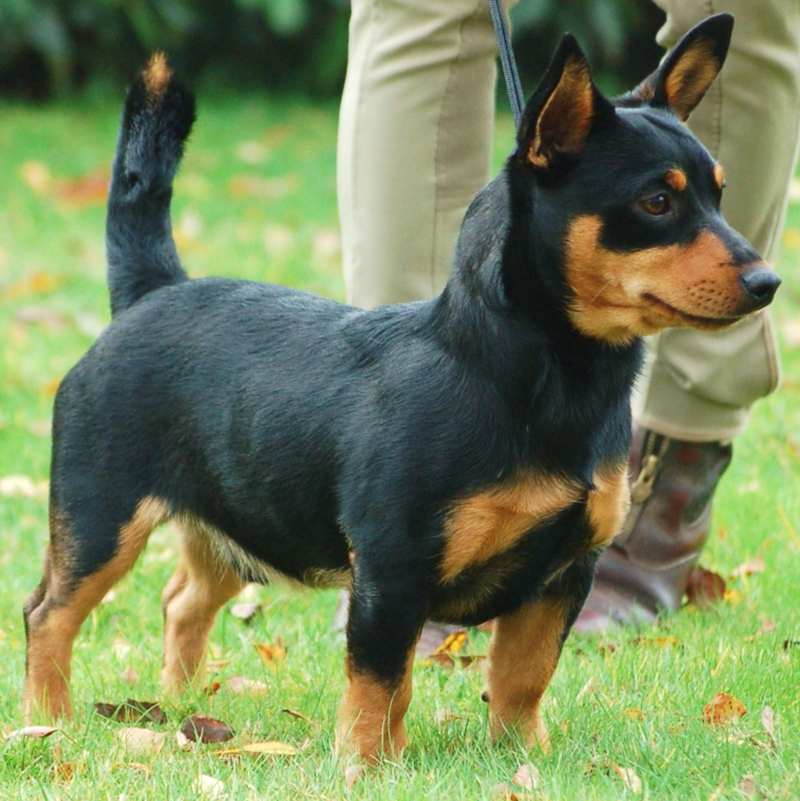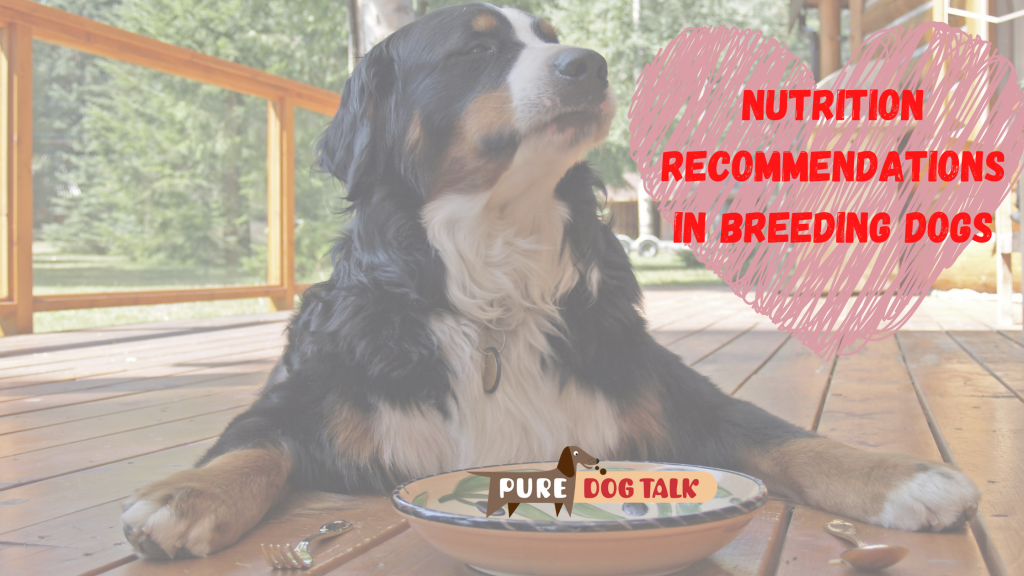Posts by Laura Reeves
457 – Breaking the Sounds of Silence
Breaking the Sounds of Silence
Every single breeder I know has said at one point or another they want to “change the conversation.” To blunt the sledgehammer of the Animal Rights vs Animal Welfare message with John Q Public. To stand up for our legal rights. To champion the brutal hard work … the literal blood, sweat and tears shed… the labor of love we undertake in order to provide the gifts of companionship, beauty and living history to our communities.
And damn near every one of those people has turned around and bashed some other breeder of whom they disapprove for whatever reason. As a result, the “divided they fall” approach implemented by the AR playbook has been spectacularly successful.
Hello darkness, my old friend
I’ve come to talk with you again
Because a vision softly creeping
Left its seeds while I was sleeping
And the vision that was planted in my brain
Still remains
Within the sound of silence
I’ve made my resolution for 2021. We’re going to break that sound of silence. I hope you’ll all join me in this goal. I’ve grabbed a megaphone, stepped outside the holy church of “Dogdom”… I’m using the voice you’ve all given me in a determined effort to *successfully* preach *beyond* the choir.
And in the naked light, I saw
Ten thousand people, maybe more
People talking without speaking
People hearing without listening
People writing songs that voices never share
And no one dared
Disturb the sound of silence
If you haven’t subscribed to the Good Dog Pod, now is the time. I’ve joined forces with Good Dog in a determined effort to leverage reach, resources, technical skills and insight of a team who already speaks a language many of us have never known or have long forgotten. Regular Joe. Dog lover. Perhaps even “fur mommy”…. For some of us, it’s like learning Swahili. Talking AT people who don’t understand your language and culture is frustrating and has caused a great deal of misery throughout history.
The Good Dog Pod and other educational initiatives sponsored by Good Dog are aimed specifically at meeting regular people where they are. Googling Golden Retriever. While we’re over here, hiding in the “church,” chipping away at our stone tablets.
The Good Dog Pod, along with a full suite of accessible resources, is also providing education and mentorship scaled to an enormous audience of new and wannabe breeders who want to do the right thing, but don’t know what it is. Or that there even IS a “right” thing. By applying standards to ALL breeders, by celebrating and promoting breeders, by providing access and support for health testing, in just the last year they are already changing the conversation within the larger dog breeding community.
Because the reality check is, AKC and others estimate that dog owners in the US will seek roughly 9 million replacement dogs *each year*…. And that isn’t counting a pandemic. AKC breeders register something like 1 million of those dogs. So 8 million dogs are being produced with little to no access to meaningful resources. And owners are acquiring them because they CAN. Because someone answered their call and didn’t belittle them for not knowing the decoder ring secret password. Because someone spoke their language.
Education is the Answer. To Everything.
As you have heard me say time and again, education is the answer. To everything. And, if a little education is good, a LOT is definitely better.
The Good Dog Pod, with training insights, breeding, whelping and raising tips, legal advice and general dog knowledge, will continue to drop every Wednesday. You can subscribe anywhere you listen to Pure Dog Talk.
Speaking of which, YES, Pure Dog Talk IS going to continue. The Pure Dog Talk episodes will drop every Monday. Veterinary Voice, Love the Breeds, The Interviews and The Conversations will retain their focus on the world of competitive purebred dogs. The Voice of Purebred Dogs will mos def NOT be silenced.
In fact, we’re kicking off some super exciting news right here!!
Collections
FIRST, Pure Dog Talk Classic is a series of new collections, with RSS feeds of their very own, showcasing the first early episodes which currently are only available by keyword search on the website. They will also be available by specific category.
For example, currently available collections include:
https://feeds.captivate.fm/puredogtalk/the-interviews/
The Interviews
The masters, the legends and the larger than life people world wide who have influenced purebred dogs over the last 50-plus years. Preserving 20th century knowledge and presenting it in a 21st century format. Want to know about a dog show judge and what matters in their ring? Learn directly from the source. Want to build an incredible family of dogs? Learn from the giants in our tribe.
https://feeds.captivate.fm/puredogtalk/love-the-breeds/
Love the Breeds
Laura interviews the *experts* to learn about breeds from Azawakh to Xoloitzcuintli. Long-time breeders, respected authorities and devoted owners cover personality, activity levels, grooming requirements, health and longevity of their chosen breeds. Dive into the living history represented by dog breeds from around the world and across the ages.
https://feeds.captivate.fm/puredogtalk/breeding-and-whelping-hands-on/
Breeding and Whelping: Hands-On
Learn from veterinarians, master breeders, and experts about the critical nuances, best practices, and science of successfully breeding and whelping your next litter. From progesterone numbers to semen evaluation; from c-section, decisions to free whelp help; from troubleshooting to the celebration, you’ll find the answers here!
Coming in the near future: Masters in Breeding Theory, Show Ring Handling and Grooming, Performance Events, and anything else y’all want! If you have a collection request, just shoot me an email at laura@puredogtalk.com If fact, a HUGE shoutout to listener Jenna Vermette-Gerow for planting the seed of this idea in my brain!
Cyber Sweepstakes
SECOND, with the pandemic cancellations still decimating enormous swaths of our sport, particularly notable here on the west coast, where our HUGE January shows in California, Washington and Oregon are moved or removed from the calendar, we’re bringing back the Pure Dog Talk CyberSweepstakes presented by Trupanion!!
Debuted in March of this year after Louisville was shut down, with a variety of shows through the summer, I let it subside during the few months of actual dog shows that started back in Oklahoma. But I wanted to bring it back in solidarity with our local exhibitors. If you haven’t already, like the FB page of the same name for updates and details in the coming weeks.
Patrons!
THIRD, don’t forget the Pure Dog Talk Patrons! We’re hosting an event in March and another in August. These training days, seminars, and retreats are one of the major perks of joining the most supportive and welcoming circle within our tribe. For as little as $5/month, you can gain access to monthly After Dark conversations, events, insider tips and more.
Finally, join me in thanking and supporting Trupanion and Embark who elected to remain in partnership with Pure Dog Talk in providing GREAT content to the purebred dog community. And, join me in welcoming Good Dog to the family.
2020 tried to crush us. It took lives, friendships, and often sanity. It cost jobs and comfort zones. But if you’re listening to this, it means you won. You beat that bitch. You survived. You learned how strong you are. You discovered new ways, fell back on old ways, or invented whole new paths to keep moving forward. But you did it! And so did I.
So let’s all keep that momentum going into the new year. Break down the barriers. Break out of the ruts in your brain. Break the sound of silence.
Peace out …. Wishing you a blessed new year.
456 – Rhonda Cassidy: For the Love of Dogs
Rhonda Cassidy: For the Love of Dogs
 Dog show photographer Rhonda Cassidy tells the story of the intersection between her lifelong passions for dogs and art.
Dog show photographer Rhonda Cassidy tells the story of the intersection between her lifelong passions for dogs and art.
Starting with a newbie’s understanding of dog shows but a lifetime love of dogs and art, Cassidy’s humble beginning and dedication shine through her art in her forthcoming book, For the Love of Dogs.
“When I was a kid, I collected postcards of dogs,” Cassidy said. “I made a scrapbook. Back then I’d go to the library and check out every book I could find about dogs and learn about breeds … I would write stories and illustrate them.”
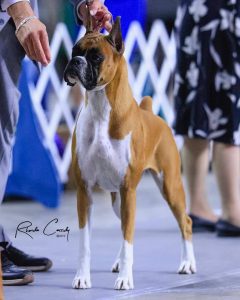 From the first photo of her Irish Water Spaniel she had published in the AKC Gazette column to photographing some of the top show dogs in the United States, Cassidy’s journey has been driven by her twin passions.
From the first photo of her Irish Water Spaniel she had published in the AKC Gazette column to photographing some of the top show dogs in the United States, Cassidy’s journey has been driven by her twin passions.
“It wasn’t something that I thought I should do,” Cassiday said. “It was something I *had* to do. It was like I had a hand on my shoulder. It said you have got to do this.”
Cassidy’s photography raises the form to an art, reaching beyond the physical specimen to capture the character, the soul of the dog.
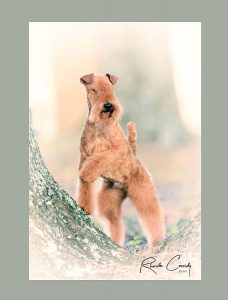 “I feel it,” she said. “I can explain it to you, but I can’t make you *feel* it… Whether it’s doing candids or ring shots, I get goosebumps… I know what I want to see and sometimes it just happens. Sometimes it doesn’t. But it’s just there for a second.
“I feel it,” she said. “I can explain it to you, but I can’t make you *feel* it… Whether it’s doing candids or ring shots, I get goosebumps… I know what I want to see and sometimes it just happens. Sometimes it doesn’t. But it’s just there for a second.
For the Love of Dogs
“I have hundreds of thousands of pictures. I wanted a collection that somebody could hold in their hands. I wanted something just for people to remember me. This was Rhonda Cassidy and here’s what she loved. This is who she is.”
455 – I’ll Be Home For Christmas and the Ghost of Christmas Past
454 – Danish Swedish Farmdogs – Friendly, Low Maintenance, Sturdy
Danish Swedish Farmdogs – Friendly, Low Maintenance, Sturdy
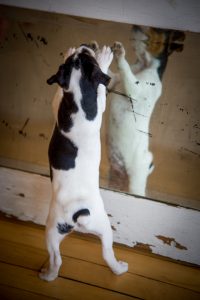 Dr. Marty Greer joins host Laura Reeves to talk about the FSS breed with which she’s fallen in love. Danish Swedish Farmdogs date to the 1700s but were saved from extinction by the joint effort of the Danish and the Swedish Kennel Clubs in 1987.
Dr. Marty Greer joins host Laura Reeves to talk about the FSS breed with which she’s fallen in love. Danish Swedish Farmdogs date to the 1700s but were saved from extinction by the joint effort of the Danish and the Swedish Kennel Clubs in 1987.
History
Greer notes that the breed was originally from Denmark and their job was “sort of an all-purpose farm dog”.. so they were to herd, they were to play with the kids, be able to be Watch Dogs … “that’s kind of what appealed to me about them, is they’re a hardy little dog.”
“They’re cool little dogs,” Greer said. “I find them to be absolutely fascinating and really easy to get along with. Every time you see pictures of them, they are stacked on top of each other sleeping. They don’t have that terrier snarky, sparring kind of attitude.
Size and Grooming
“The males are probably 22 to 24 pounds. The females are 18 to 20. They are small enough dog that you can pick them up under one arm, you can put them in a Sherpa bag and fit them under the seat of an airplane. So if you’re going to be traveling they’re portable.
“One of the things that appeal to me about them is that easy to maintain coat. When I got into Corgis back in the 1980s, you’d wash your dog, you blow her out and you take her in the ring. You didn’t do anything else. Now there’s quite a bit of grooming that goes into a Corgi … I find that to be a little upsetting when you’re supposed to be showing a dog that’s natural.
“Well, this dog really is natural. There’s no trimming. There’s nothing you could trim other than their toenails. When you travel with them you just need a towel. You don’t need a brush. You need a towel and a leash.
Temperament and Activity
“There’s no dog aggression, no people aggression. Just kind of chill little dogs … they come in the house, do one loop-through, flop down on the couch and hang out with you the rest of the day. I really appreciate that about a dog because, by the time I’m done with a 14-hour shift, I don’t really want to come home and throw the tennis ball for two hours. So I appreciate a dog that has the ability to settle in the house. At the same time, there are a lot of activities that people do with them. They’re doing lure coursing, lots and lots of flyballs, lots of agility. They can be shown in FSS in AKC.
“They do have the ability to jump. My 4-month-old Farm Dog puppy is already scaling expenses. They’re relatively quiet. They will bark occasionally if the Corgis set them off, but they don’t usually initiate the barking.”
For more information, check out these resources.
http://www.fci.be/Nomenclature/Standards/356g02-en.pdf
https://dsfca.clubexpress.com/content.aspx?page_id=0&club_id=459025
453 – Dr. Jerold Bell: Dog Breeding is Not “Paint by Numbers”
452 – Drentsche Patrijshond: Hunting Dog, Property Dog, Family Dog
Drentsche Patrijshond: Hunting Dog, Property Dog, Family Dog
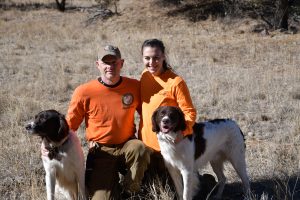 Rare breeds spotlight continues with the “Drent,” short for Drentsche Patrijshond, the all-purpose hunting dog of The Netherlands. Brian and Jenna O’Connor join host Laura Reeves to share their passion for this ancient breed.
Rare breeds spotlight continues with the “Drent,” short for Drentsche Patrijshond, the all-purpose hunting dog of The Netherlands. Brian and Jenna O’Connor join host Laura Reeves to share their passion for this ancient breed.
“(The breed is) about 350, almost 400 years old,” Brian said. “They were brought up through the Spanish occupation that went all up through France, Belgium, the Netherlands, in that little bit of western Germany. They brought over camp followers and their dogs, and they deposited all these dogs along the way. The Drent is one of these dogs that was kind of brought up through this phenomenon.
“Part of what makes the history of the Drent really unique is the province of Drenthe. It is a province with rolling hills. That’s where Vincent van Gogh came from … all those dark brooding skies is very typical of that landscape out there. …
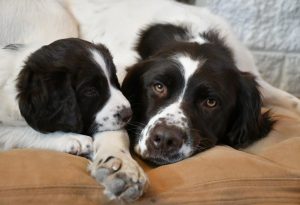 “The common man had the right to hunt there… This is 300 years ago. That wasn’t normal. So, if you were a priest or farmer, any professional class, you had the right to hunt. That was even unique within the country of the Netherlands, where hunting was reserved for nobility.
“The common man had the right to hunt there… This is 300 years ago. That wasn’t normal. So, if you were a priest or farmer, any professional class, you had the right to hunt. That was even unique within the country of the Netherlands, where hunting was reserved for nobility.
SUV of hunting dogs
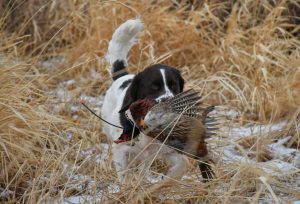 “So, you were this relatively poor person, odds are you were a farmer, and you could afford one dog … that one dog had to be able to do everything. So, if you were hunting Fox …if you’re hunting Swan or pheasant or Hungarian Partridge, if you’re hunting ducks whatever… oh, and by the way, when you needed to cart your milk or cheese or your vegetables to market on Wednesday, you would rig up your dog and the Drent would haul your goods to market for you.
“So, you were this relatively poor person, odds are you were a farmer, and you could afford one dog … that one dog had to be able to do everything. So, if you were hunting Fox …if you’re hunting Swan or pheasant or Hungarian Partridge, if you’re hunting ducks whatever… oh, and by the way, when you needed to cart your milk or cheese or your vegetables to market on Wednesday, you would rig up your dog and the Drent would haul your goods to market for you.
“They’re really close to their people, even if they don’t need to be sleeping on you. They’re going to be near you. There are the kind of dog that will not thrive in a kennel environment because they build that bond with their people and they’re not going to do well without their people. We don’t have a lot of reports of separation anxiety in the breed, but I would advocate for people to kennel train them. Otherwise, they’re going to find something to get into. They fall in the category of that smart continental versatile hunting dog that never should be left on its own.”
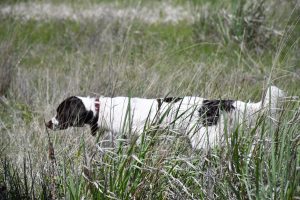 “(The Drent) really doesn’t have a lot of grooming,” Jenna said. “You wouldn’t treat a dog for a show much different than you would treat a dog going on a hunt or around the house. (A) good brushing once a week, maybe more when they shed once a year. Some Drents can get a little bit longer ear hair. You can either pluck it with your fingers or you can use a stripping knife and just pull that dead hair out. Other than that, they have feathering but you really don’t trim that. If you want to trim their hair on the feet that’s great but really they’re pretty au natural.”
“(The Drent) really doesn’t have a lot of grooming,” Jenna said. “You wouldn’t treat a dog for a show much different than you would treat a dog going on a hunt or around the house. (A) good brushing once a week, maybe more when they shed once a year. Some Drents can get a little bit longer ear hair. You can either pluck it with your fingers or you can use a stripping knife and just pull that dead hair out. Other than that, they have feathering but you really don’t trim that. If you want to trim their hair on the feet that’s great but really they’re pretty au natural.”
“The numbers we just got last week was 3,600 (Drents worldwide). In the States, we have less than 150. Of that 150, less than 10% of those are approved for breeding. We only maybe have two … active breeders. So we are definitely in the realm of needing some breed fanciers to step in and really invest some time into these guys ’cause they’re amazing dogs,” Brian noted.
For more info:
Brian’s book: https://www.blurb.com/b/5491948-the-drentsche-patrijshond-for-the-north-american-f
Drentsche Patrijshond Club of North America: www.ADPA.org
451 – Pandemic Puppy: Inside Scoop on Marty Greer’s New Book
450 — Lancashire Heelers: Scrappy, Smiling and Opinionated
449 – Dr. Jerold Bell: Popular Sire Syndrome Defined
448 – Nutrition Recommendations in Breeding Dogs
Nutrition Recommendations in Breeding Dogs
Dr. Marty Greer and Sheryl Bradbury, owned brands manager at Revival Animal Health, join Host Laura Reeves for a discussion about micronutrients and supplements for breeding dogs.
“One of the concepts that we need to discuss is that there’s a likelihood that some of the commercial diets are not as nutritionally complete as they need to be for all stages of the dog’s life and that includes reproduction,” Greer said.
“Reproduction truly is a luxury in the body and it’s only going to happen if the body has already been able to take care of its vital organs. Then your body can start thinking about making sperm, making eggs, growing babies, all those parts. So it’s really important that we don’t overlook the micronutrients that sometimes are not mainstream enough for the general pet food company diets to be included in the food.
“Folic acid, of course, is important to reduce the risk of midline defects. These are primarily thought of as being cleft palates, but it can be cleft lips, it can be umbilical hernias, it can be open abdominal walls, spina bifida, any number of those types of midline defects where, during development, the right side and the left side of the body don’t find each other.
“A 5 milligram per dog per day dose (of Folic Acid) regardless of the size of the dog. That’s a pretty big dose. A lot of times, we only see something like 400 micrograms in a capsule or caplet when it’s purchased over the counter. So, you have to read the label. You have to make sure that you’re getting the product that you want. Revival’s been working on raising the amount of folic acid in their supplements to make sure that it’s sufficient.
“Studies show that the dogs that are clinically and genetically predisposed to developing cleft palates, such as the French bulldog, Chihuahua, the bulldog, they can significantly reduce by 50 to 60% the incidence of cleft palates. The most important thing to remember is you need to start it six weeks before the dog is bred, so you can’t wait until she comes into heat.
“DHA has been determined, through a really nice study from Canine Companions for Independence, to be essential in brain and eye development for puppies. Carbohydrates over the last few years have fallen into some interesting categories of the grain free diets. We lost some of the oatmeal, barley, rice, wheat, corn, those kinds of things and they’ve been replaced by peas, beans and lentils which are concerning.
“There’s a lot of other really little tiny nutrients that are difficult to really completely follow … that’s going to include tyrosine, arginine, taurine, vitamin E, biotin, vitamin A and vitamin C. Now vitamin A, we have to be really careful with because excessive amounts of vitamin A, found in things like too much liver or certain supplements, can actually cause midline defects. So it’s important that we’re paying attention to the details. There’s just a whole bunch of these little tiny nutrients that we assume are all in our foods but perhaps are not in the levels that we need for our bitches.
“The typical young male dog, up until the age of about four or five, is probably fine on most of the diets that we feed. But there are changes that happen in the kind of testosterone that is made in the testicles … so at that point, we really need to step up our nutrient profiles for the stud dogs.
“(An anecdotal survey of veterinarians regarding stud dog supplementation indicated that) typically there was a fatty acid supplement, there was some kind of an anti-inflammatory, whether it was ICSB-CF plus or one of the other glycoflex types of products. Sometimes selenium was included in that. And then L carnitine. L carnitine is important in the tail function and development in the stud dog’s sperm. So, it’s an assortment. It tends to be a little cocktail that most people put together in their practice for their stud dogs.”


